In one of my first projects, I had a client. She was a lovely person and a fantastic client to have. Her project went great. We were both happy with the design and how her website came out. I was super proud because it was my best website yet. It sounds like a success, right?
Then 6 months later, I ran into her and asked how her site was going, expecting positivity and praise. Instead, I got a response I was not prepared for. She said in a somber voice, “Not one person has contacted me through the website. I haven’t got business from it yet.”
I went from a feeling of pride to failure in 10 seconds. I felt like I let my client down. I knew how important it was that she get business. I put care and passion into her project, but my focus was on making a website that looked good. That experience changed everything for me, and from that day forward, I look at web design differently. It’s much more important than just making a clean looking website. It became helping a client with their business.
What is ‘Value’ in Web Design
Value can have a wide range. And we all have something unique inside of us, and we can give to clients from our life experiences. The trick is, you have to take an honest look deep down inside of yourself for this. What are your assets and strengths? What are you good at? Why do clients like working with you?
Try taking the time to write those down and make a list. It might be clients like your communication, your passion, your listening skills, your empathy, and so on. Everyone reading this already has a few qualities that can be considered value. Once you understand your strengths, utilize those, and make them work for you and your clients.
Now let’s create a list of all the things you can do to improve your web design services. Just like we have strengths, we also have weaknesses, and it is good to know and recognize both. By identifying the areas you need improvement on, it gives you the chance to improve. For me, it was listening. I realized that was not my strength, so what I started doing was an exercise where every time I talk with a client, I consistently took notes forcing me to listen.
And then there’s the value that can take you from making 1k a project to over 10k a project. And that is in the deliverables and results of what you give to your clients. For example, imagine my client that got 0 leads from the site I built her. What if I helped her get 100 leads that led to 20 big jobs in her first 6 months? How much more would that have been worth? How much would you pay someone to get you 20 good projects in 6 months? I guess you’d be willing to pay good money for that because the value far exceeds the price you would pay.
Changing Your Mindset as a Web Designer
The first step is a change in thinking and the way you view web design. It is not just about making things look good. It’s about solving problems to achieve a goal. If you are asking yourself, “How am I supposed to solve problems with design?”, you are on the right track. This is the question to start asking yourself. And now you are ready for the journey down the rabbit hole of design thinking.
There are plenty of books and articles about design thinking. Get obsessed and start diving into these. It will change how you look at design. I am 100% self-taught, and I am sure most reading this article are too. Being self-taught learning design, we miss out on all the fundamental courses that designers who are educated through school get. And as a result, we tend to dive right into the aesthetics of design without understanding most about the ‘whys’ and ‘hows.’
For web design, we must deliver an amazing looking website. But it is more important to provide a site that helps our client’s business. We don’t just build websites. We create a tool for clients to use for their business. If you start a project thinking, “This will be great for my portfolio, ” you’re starting withing the wrong mindset. And when you start projects thinking, “I believe I can help this client solve the problems that are getting in their way and help their business,” you are now thinking design and value.
How Can You Add Value as a Web Designer
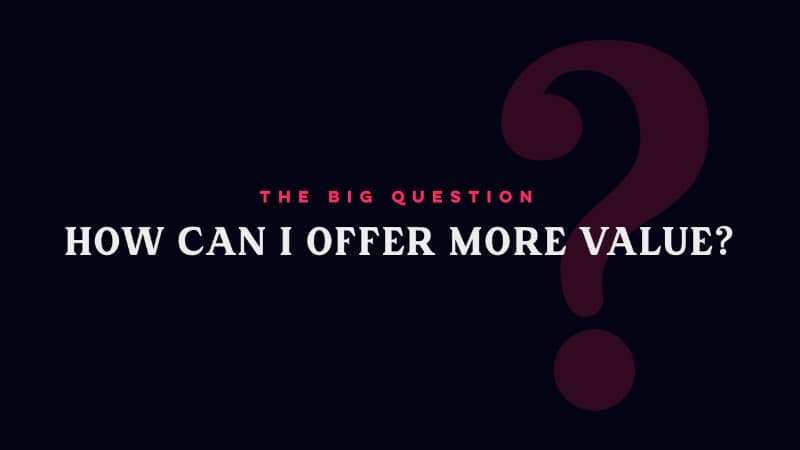
If you are new and in the beginning stages of building your web design biz, don’t overwhelm yourself and start to have doubts. We all need a starting point. And we all need to gain experience. Every project you have, you are gaining valuable experience. Every challenging client you get, you learn how to choose and manage clients more effectively. Every time there’s scope creep, you learn how to tighten your process and communicate more effectively. Every time a project goes off course, you learn how to improve your project management skills.
This kind of experience doesn’t come overnight. But since you are reading this, you are already showing you want to learn. The more you learn from both experience and self-development, the faster you move forward. I started creating content because I want to help new web designers excel more quickly than I did and avoid some of the pitfalls and hard lessons.
Below, I highlighted 5 areas where you can add value that will deliver results to your clients.
1. Improve your web design skills
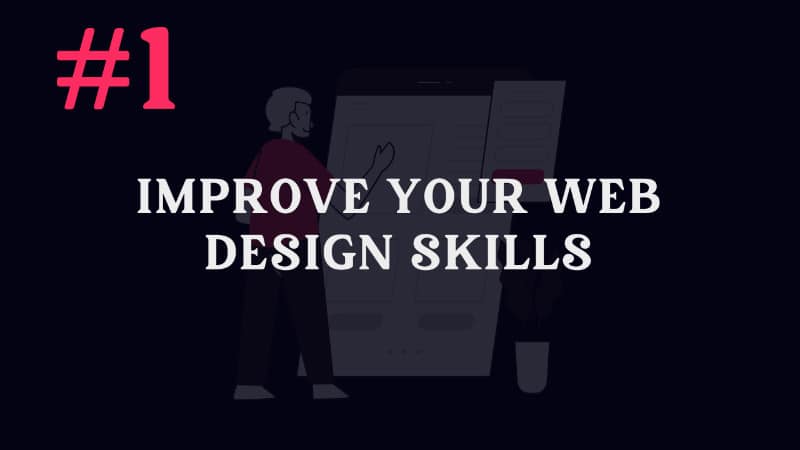
This is a must. You have to get good at your craft. There’s no way around this. This is one of those things that takes some time. Some of us are naturals, and others have to work harder.
A common mistake I see many new designers make is that they look for validation for other new designers that don’t have the eye for good design yet. It does feel good to be praised and have others give you a pat on the back. But we are not getting trophies for participation. We need to compete with the best to really build up our skills. We need to challenge ourselves.
You can find some of the best on Dribbble and Behance. If you can build up your Dribbble or Behance profiles and accumulate 1k+ followers, you are showing skills.
There are lots of ways to learn design and become a professional, self-taught designer. The first thing I suggest, immerse yourself in design. Become obsessed! When your YouTube and Google feed suggestions show nothing but recommended web design articles and videos, you are on the right track. Just remember, people go to school for this, and in school, they are spending countless hours learning, studying, and practicing. You need to do the same but on your own and without the student loans.
2. Learn UI and UX

You don’t have to become a UI or UX designer. Still, you should have an excellent understanding and knowledge of the principles. These are vital components to any website to produce results in the way of increased sales, conversions, and brand messaging.
The UI is all about how your client’s web traffic navigates through their sites. If you want your clients to increase sales or conversions, you will need to guide their visitors through your design.
Learning UX principles will open up your thought process as you approach projects since this is all about the user experience and strategy. Yep, learning UX will get you thinking strategically. Many professional designers even start charging for their Strategy and Thinking. Knowing some UX is essential for web design because you can begin to think about the user first. When you’re designing not for you or the client, but for their customers and target market, your designs will produce far greater results.
3. Learn how to facilitate discovery meetings with clients
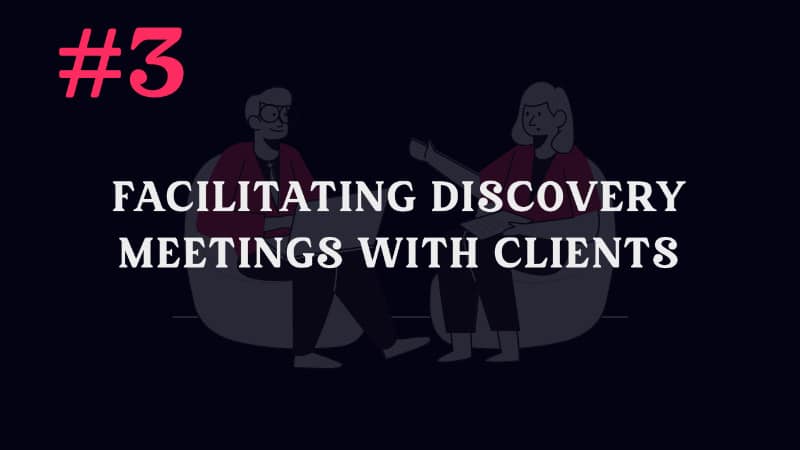
If you are brand new, this can seem overwhelming and way out there. The first time I thought of hosting a meeting with key decision-makers, I couldn’t see it. It was hard enough, just talking with a client over the phone. But that is the start, just talking with a client over the phone.
Whenever you have a call with a client, it is actually your job to take charge of the meeting. They are coming to you for help. They need you! Do not expect a client to come to you, tell you everything they need and then that would be it. That does happen, but when it does, you become nothing more than a pixel pusher doing whatever the client says. This is not where you want to be as a web designer because there is no real value to offer as an order taker. Better off just getting a job with an agency (which is totally one and not a bad thing to do!)
Here’s a tip and what worked for me. And keep in mind that I am an introvert that has anxiety talking with new people. In fact, most designers are introverts, so if you are feeling uncomfortable, it’s ok. You’re not alone.
Before a meeting, take an hour to plan it out. Write down all the questions and format the meeting the way you want it to go. And rehearse it. If you have someone to rehearse it with, that would be best. If not, use a mirror. And don’t worry, you’re not crazy. After a time, you will get better and better. Your questions will evolve. You will start to think of better questions to ask with each new client meeting.
The goal of running a successful discovery meeting is to get to the root of the client’s problem so you can offer a solution. Think of what it’s like going to the doctors. People think they have a health problem, and after googling their symptoms, they are convinced they know what it is. But when they visit the doctor, the doc asks a few questions and has a different diagnosis. It’s because the doctor is the specialist and knows what questions to ask to diagnose the problem. When running a discovery meeting, the web designer does the same. We ask the right questions to diagnose the problem. Only then can we prescribe the right solution.
4. Start thinking ‘Strategy’
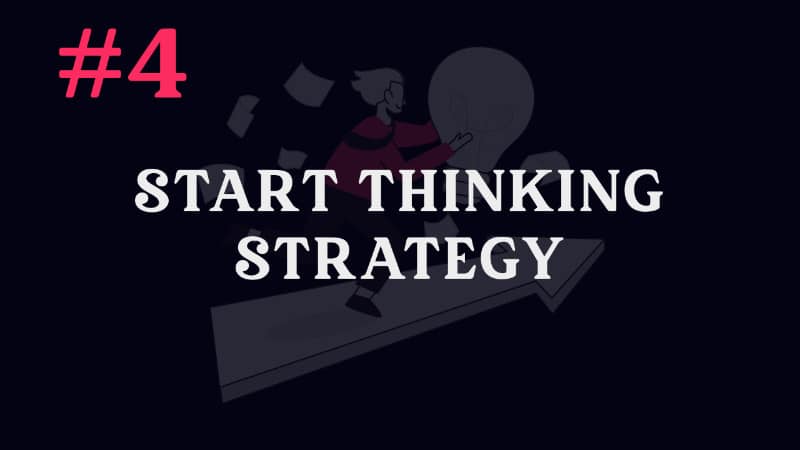
What is your design process like? How do you start your process? What steps do you take before getting to the design?
I have heard many new web designers that build their sites with Elementor say they start their designs while in development. Meaning they are designing and developing at the same time. And the reason I hear is to save time. And this is where some of you may get your feelings hurt at what I am about to say. But that’s ok. I am here to help, not enable poor practices for the sake of other’s feelings.
If you had not completed a design process before you began the site development, you are taking shortcuts at the expense of your client’s business. How can you possibly deliver results for your client when your #1 goal is to build a website fast? And this is where you have to decide what kind of designer/developer you want to be? Do you want to get low paying clients that just want something cheap? Or do you want to be a real web designer that can offer value?
If your goal is to achieve your client’s goal, then you can offer value. To do this, you have to think strategically. Once you know your client’s goals, brand positioning, and target audience, you can use it to get results.
Here are some of the things to start learning for your design process:
- Building User Personas. This will help you and your client look from the user’s point of view and design for the user first.
- Create user flows. This will help you map out the user journey through your client’s website.
- Build wireframes. This will help you build effective layouts. Here is a web design tip – every element on a website should be purposely placed. Nothing is random or there ‘just because it looks good.’
- Design style scapes. This will help you get an idea of what your client likes and does not like.
- Design mockups using a modern design tool. And please, do not use Photoshop or Illustrator for this. Learn SketchApp, Figma, or XD. You just need to learn one. They all work about the same. But you got to get really good at one of these. Always create a mockup first before you start the development.
5. Start charging more so you can do more
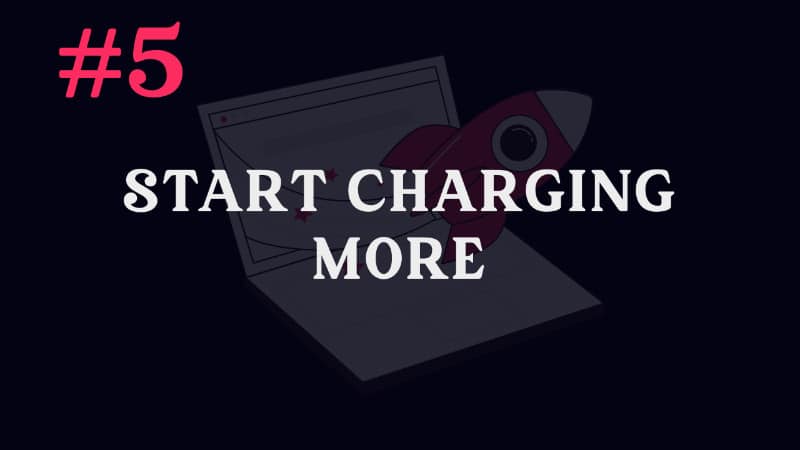
I realize a lot of what I laid out above is way out of scope for a client that does not have the budget. And I am sure many are thinking, “How can I take all that time making mockups for a low paying job?”
There is a simple solution for that. Charge more! I know it is easier said than done when it comes to increasing prices. But look at it this way, every project you are putting more into it because you are in the process of learning and improving. Because of that, you can start charging a little more for each project. I wouldn’t try making a massive jump in your prices. But making incremental jumps works and is valid.
I am not a fan of limitations. And budgets are one of those things that can limit what we can do for our clients. By asking for a larger budget from the client, I can do more and give more.
To be honest, I started creating mockups for all projects when I was new and still not getting paid much. And it took twice the time to do for the same small payment. And this is why I am guessing many don’t even want to try to do the mockups first. Because it is a huge learning curve and takes time.
That time is an investment in yourself and your skills. If you were to have gone to school for design, you would have been required to learn all kinds of Adobe software and other programs. If you would like to give more value, you need to be as good as an educated designer and take the time to learn. It will pay off later.
How Giving More, Will Earn You More
I will not sell you on a “Here’s how to make 20k a website” deal. There are other platforms for that, and they do work. It’s possible.
I will guarantee is: If you genuinely care about your clients and are serious about really getting good at web design, you can make a very sustainable career. The key is adding value. If you want to make more, start to think about how you can give more.
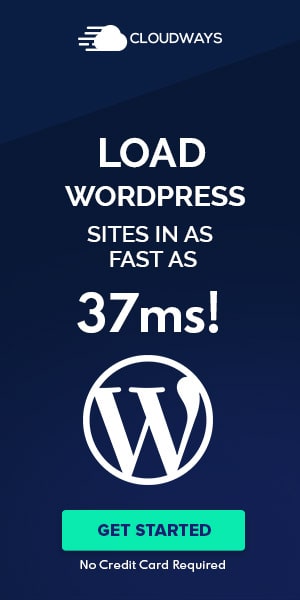

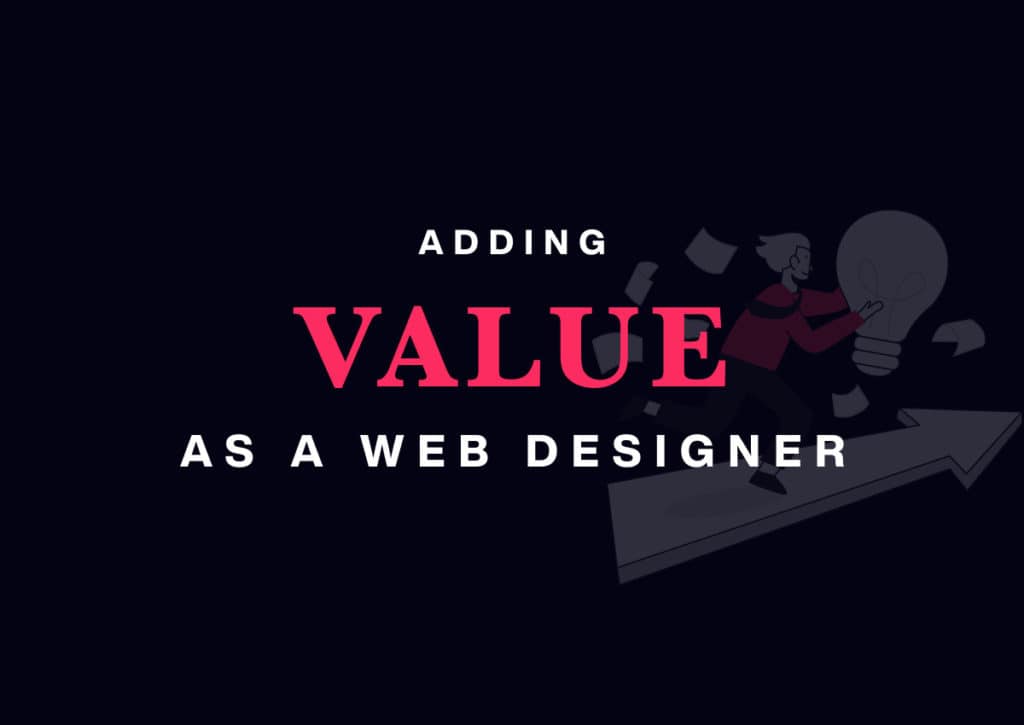
4 Responses
Great article, it has given me a lot of inspiration. I look forward to reading more articles from you. Thank you.
Always so wise and insightful. Thanks!
Thanks Partho!
Thank you so much. Timely read for me.